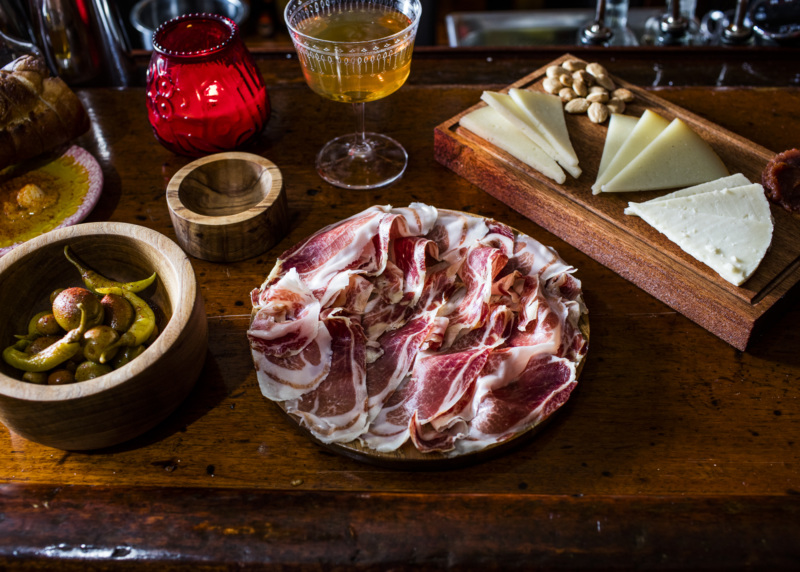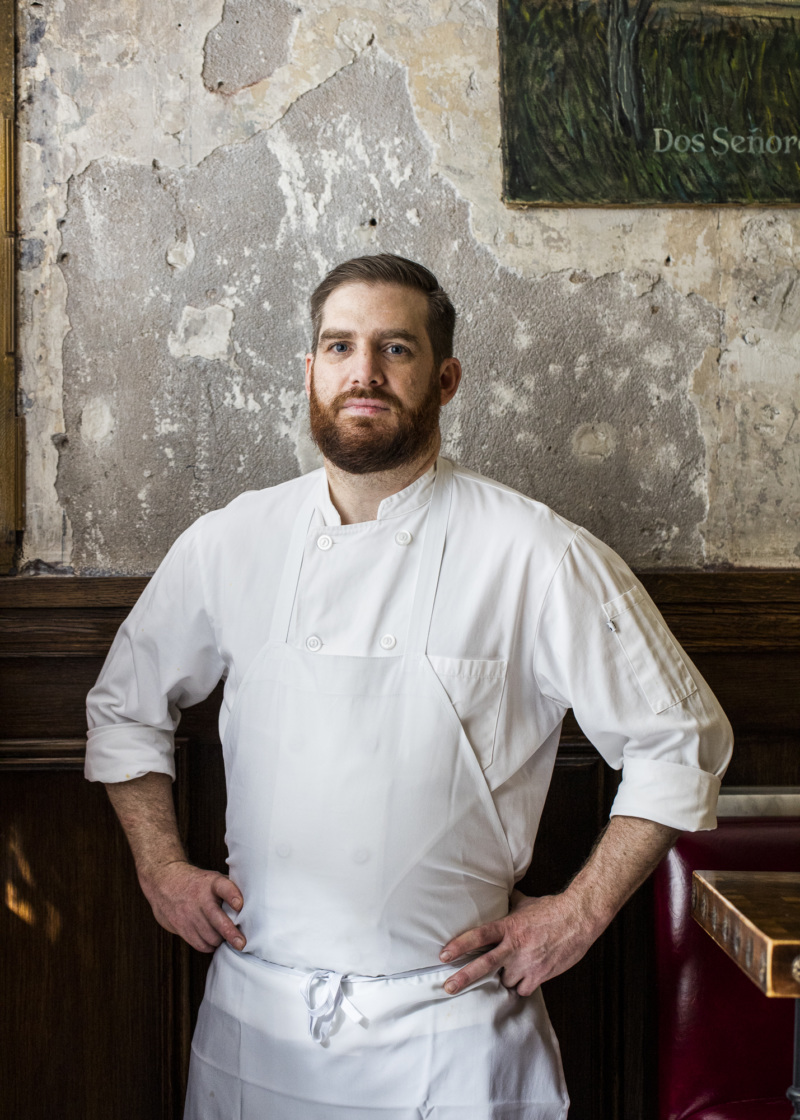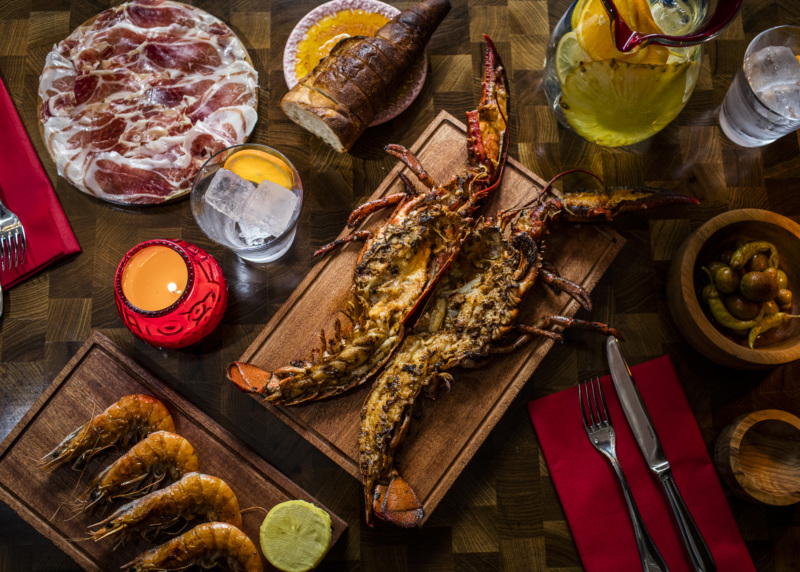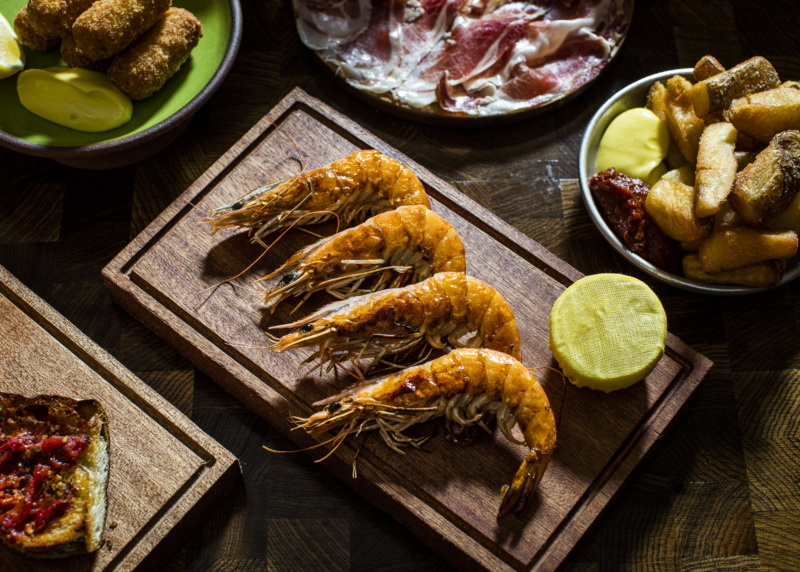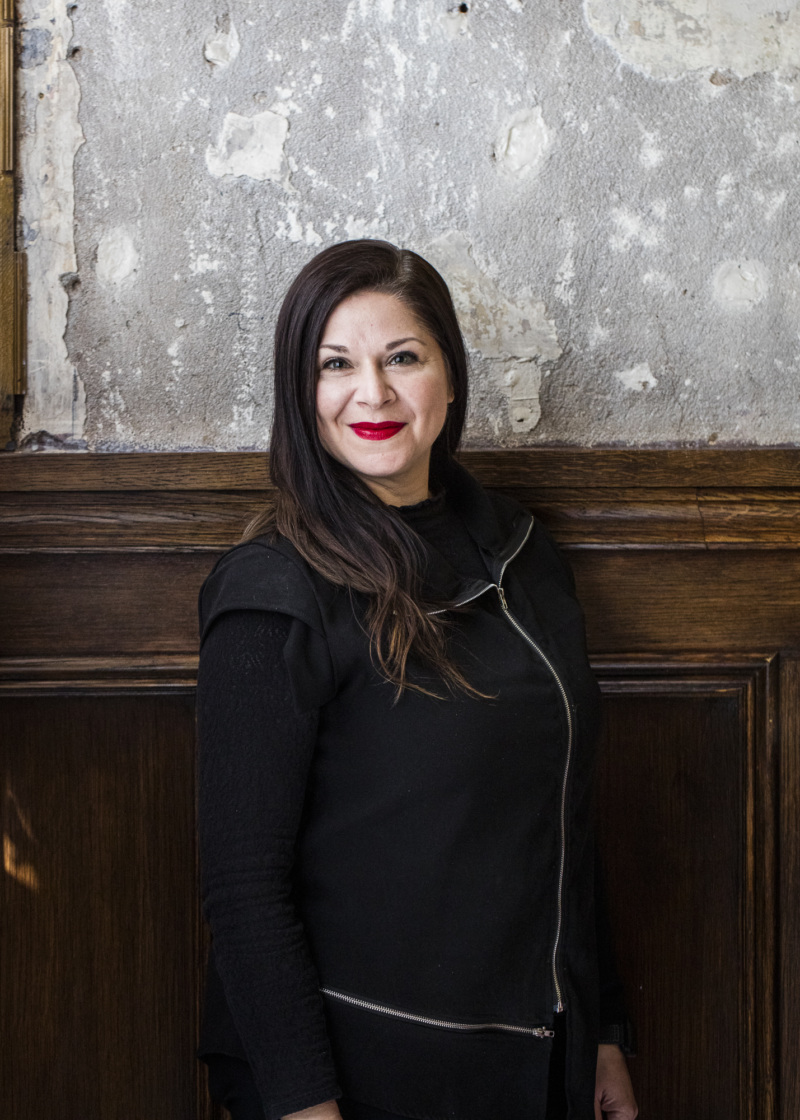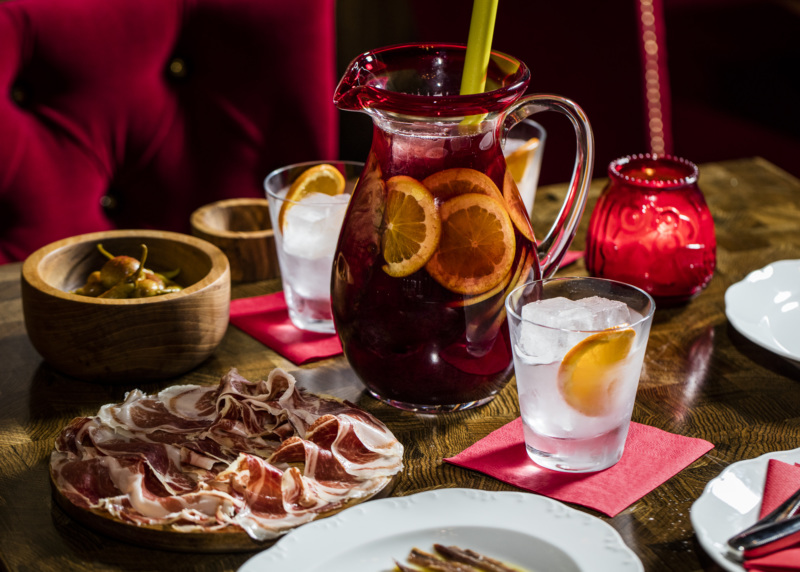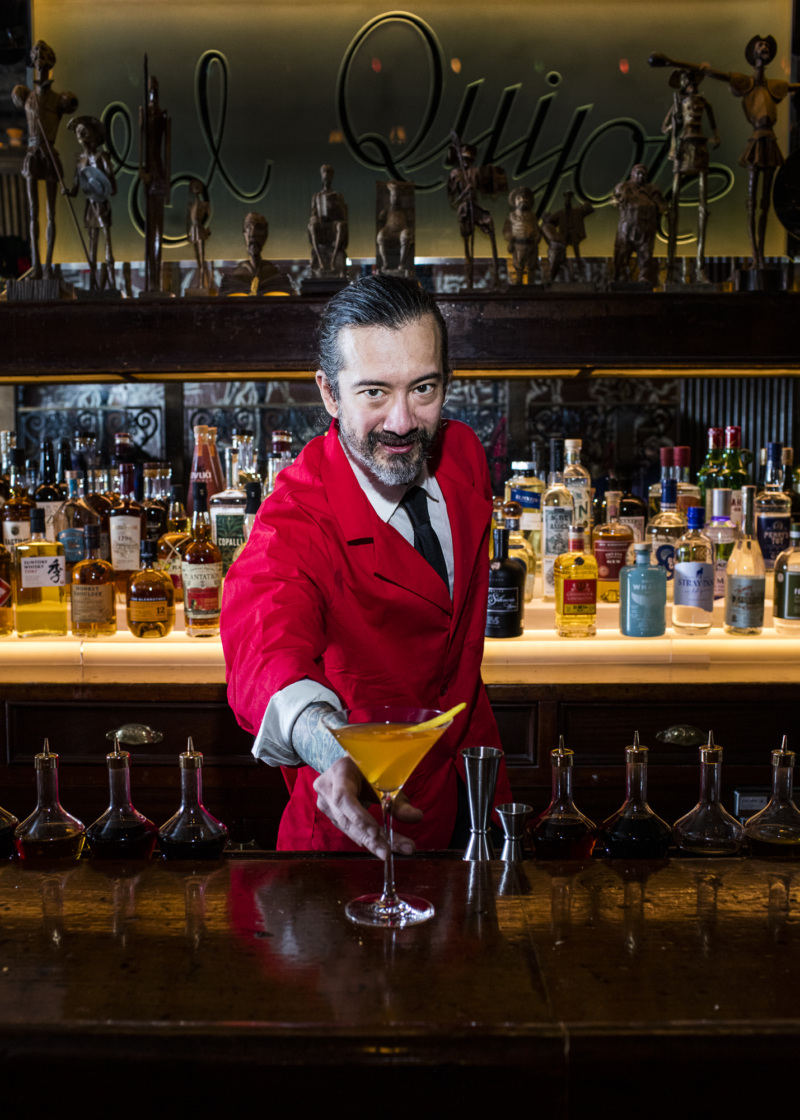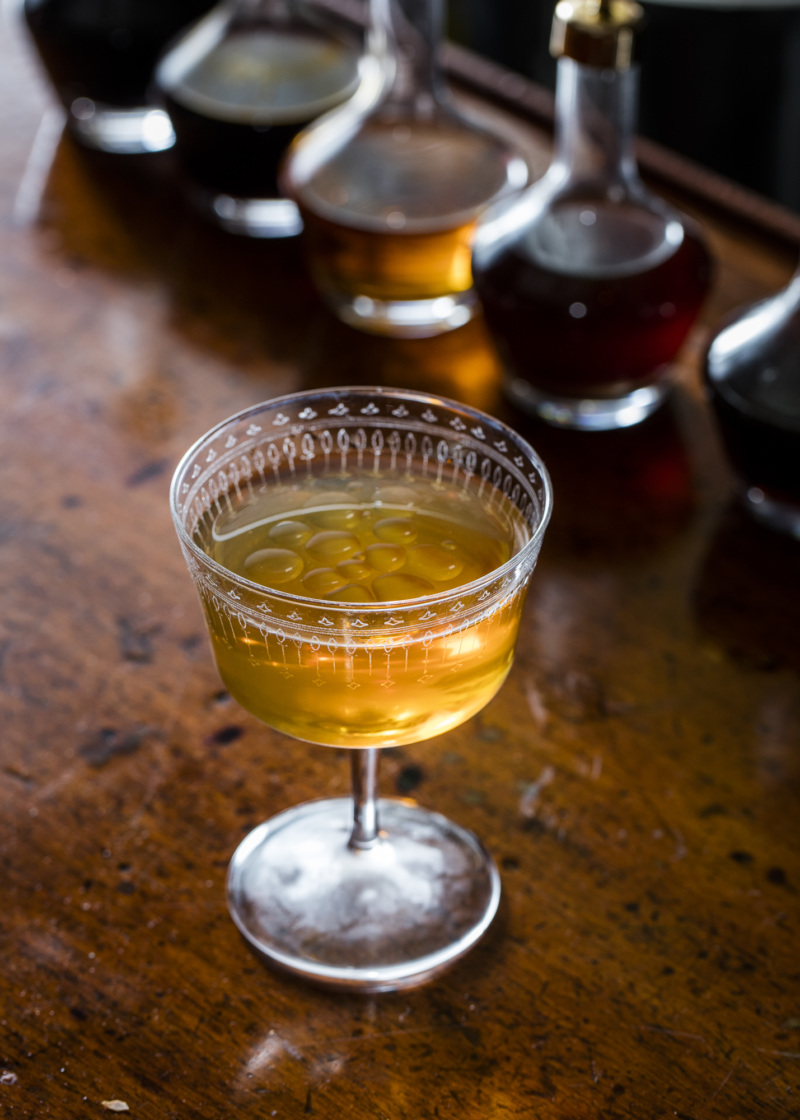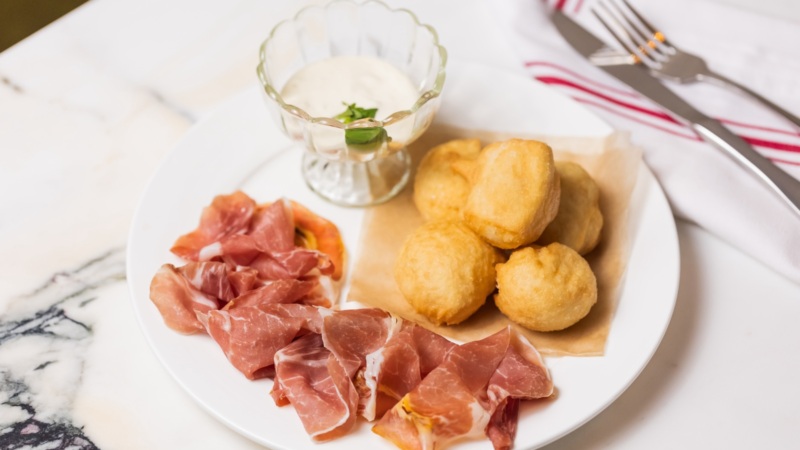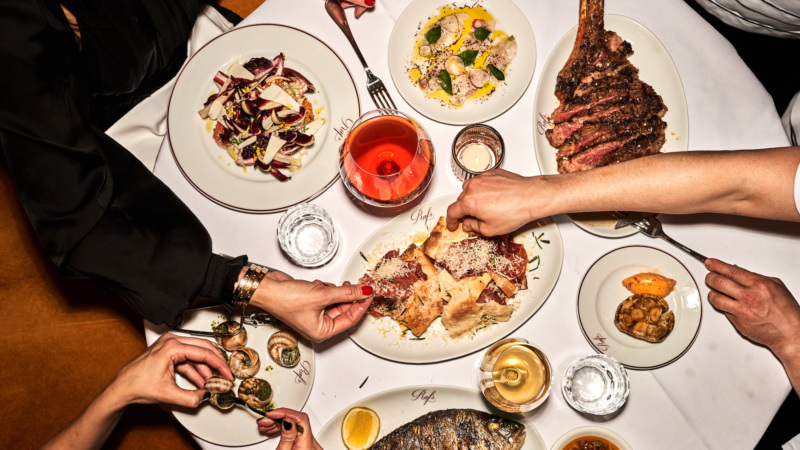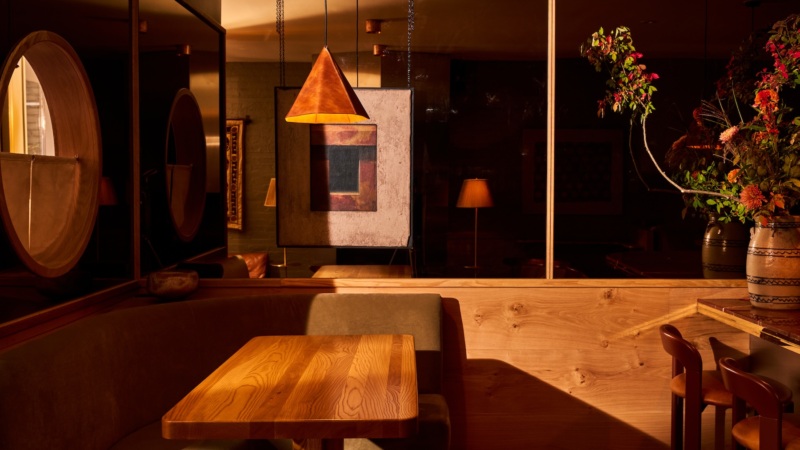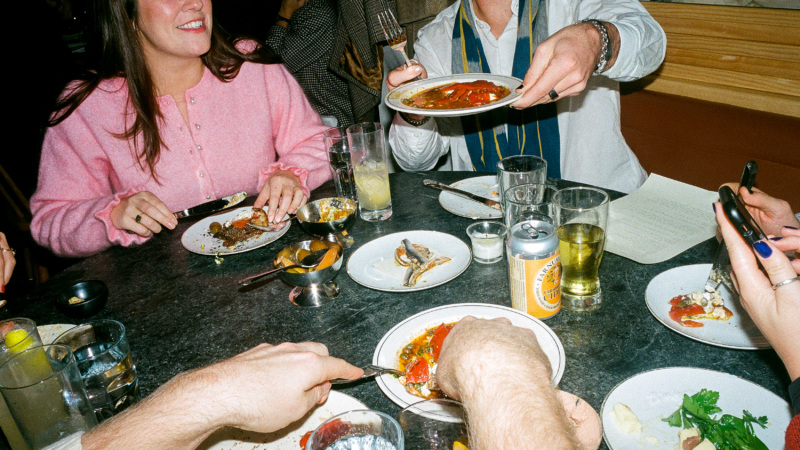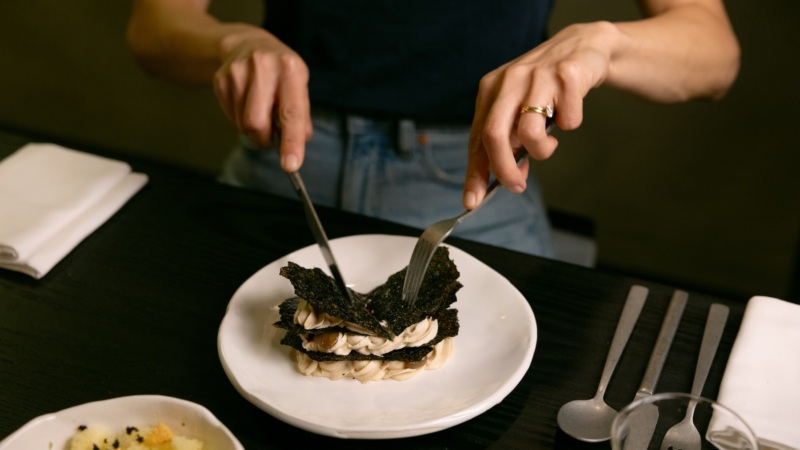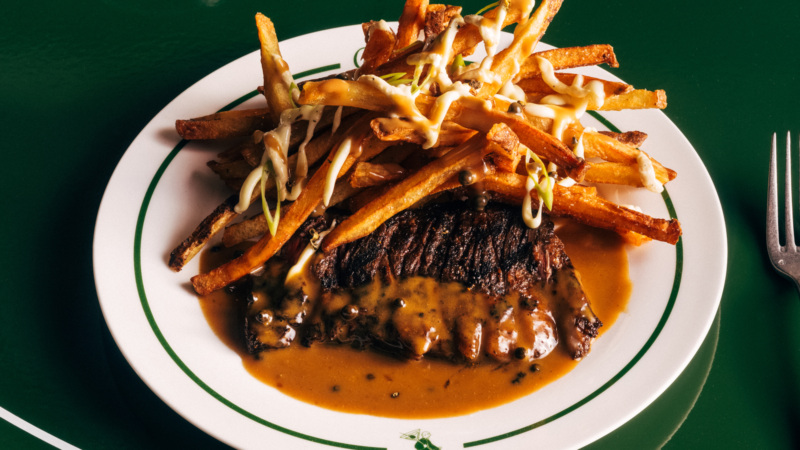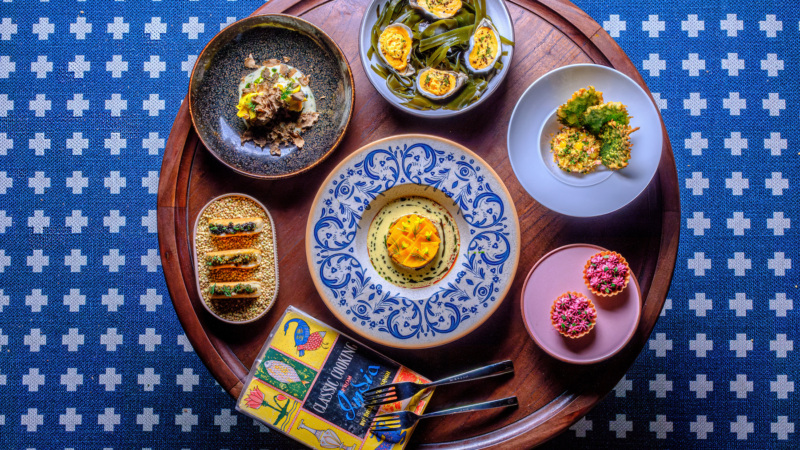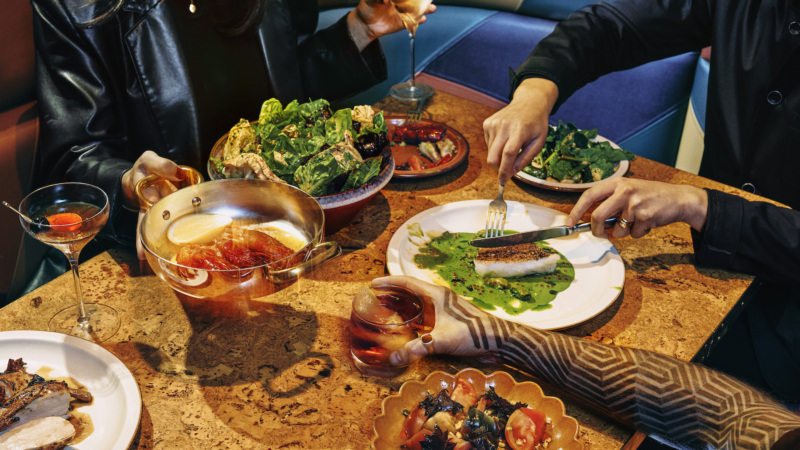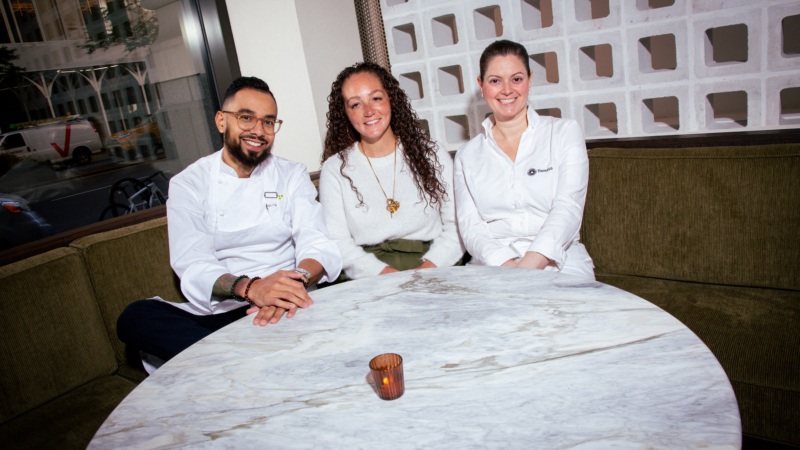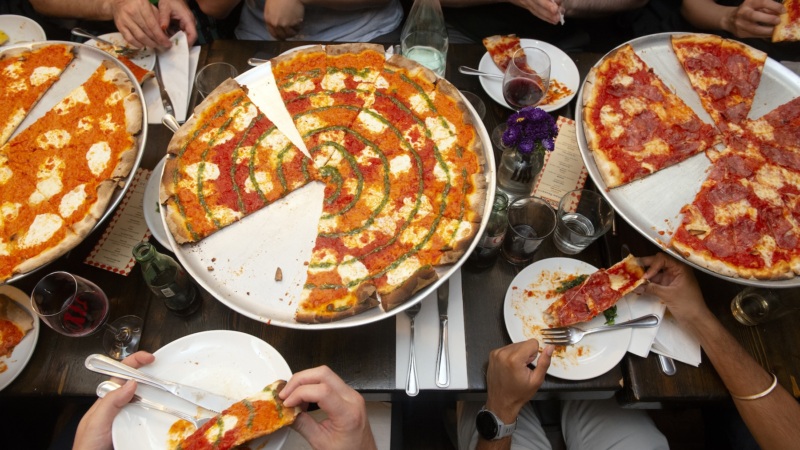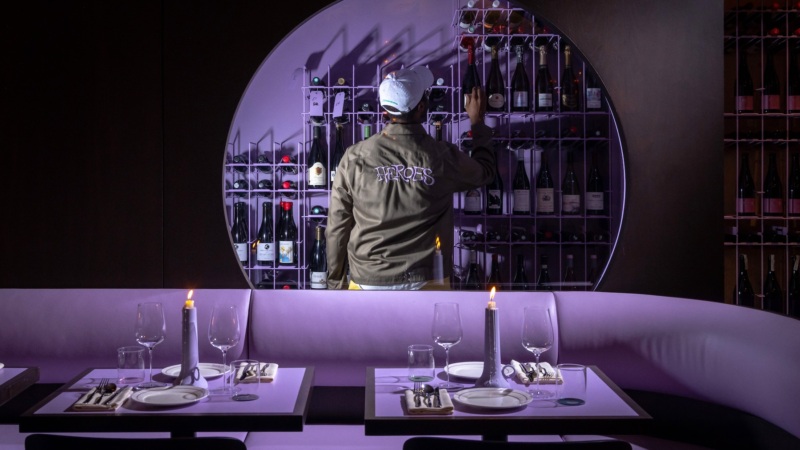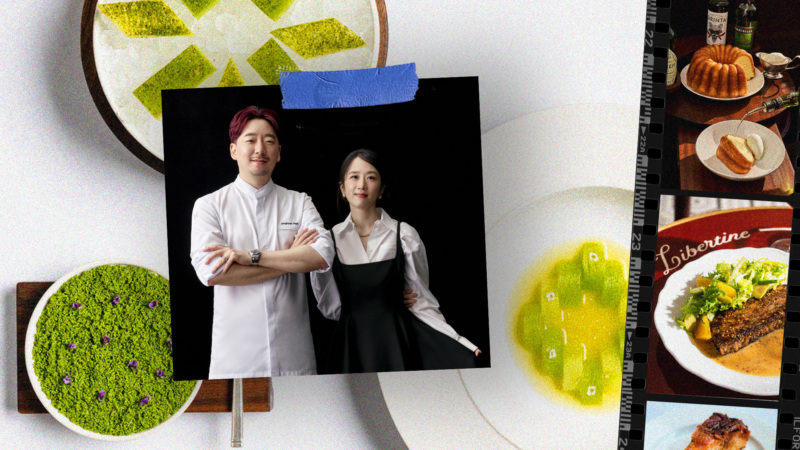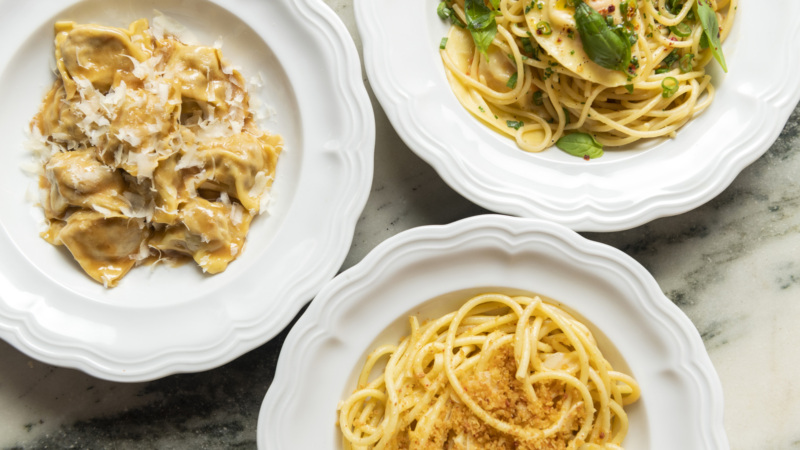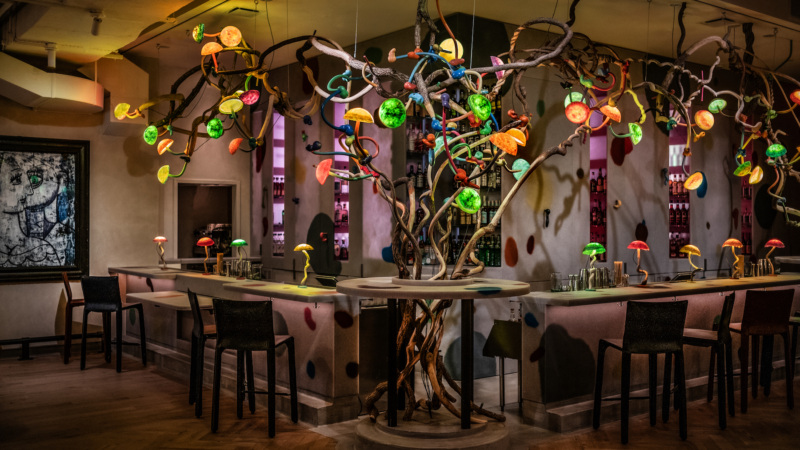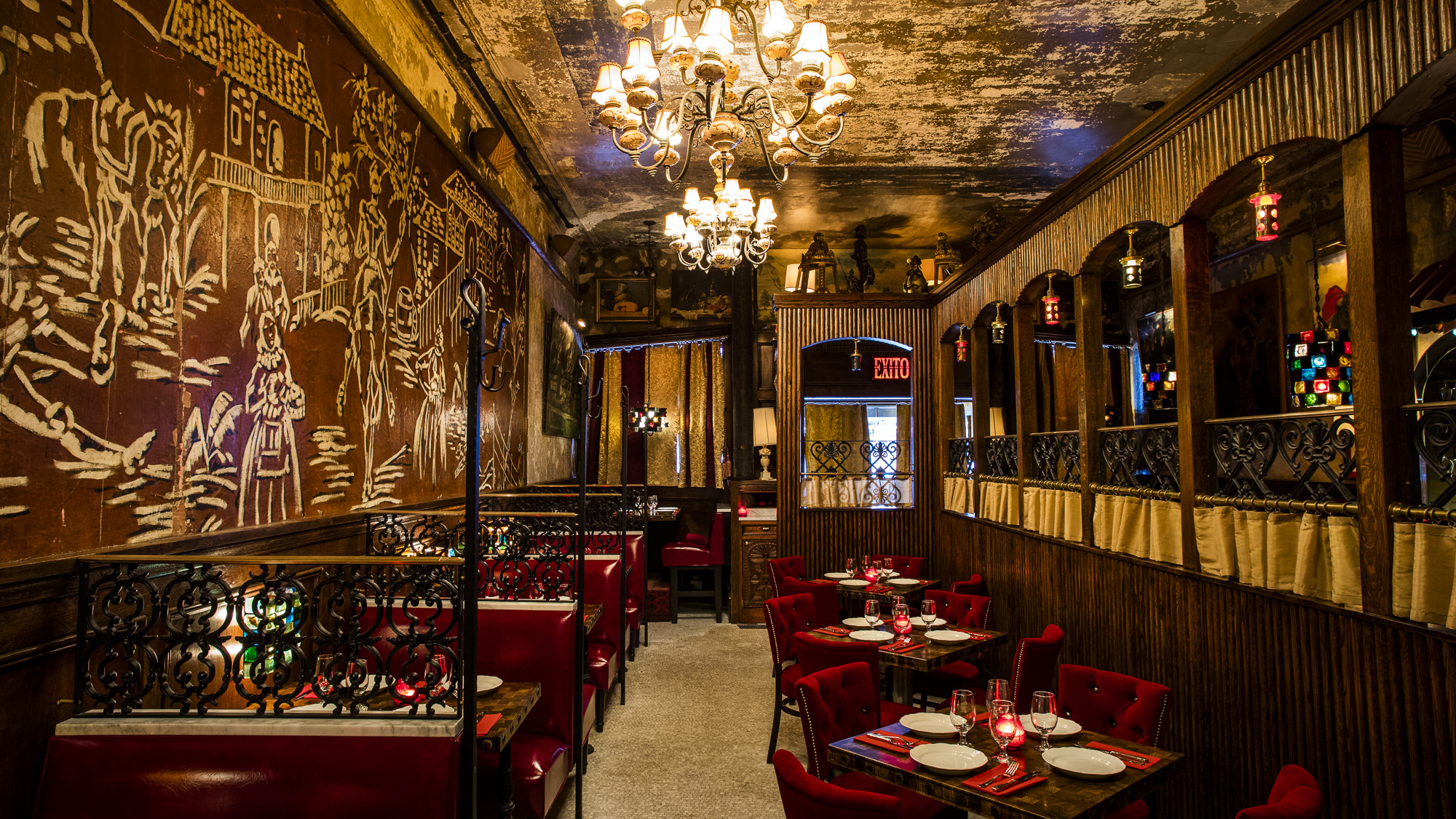
An Impossible Dream Comes True: El Quijote Gets a New Life
There’s customer loyalty. And then there’s El Quijote customer loyalty.
When the new partners behind the rebirth of the classic Spanish restaurant on 23rd Street in Manhattan reopened the doors in February, a line of regulars formed outside. They weren’t regulars of the new El Quijote, which is smaller, swankier, and more polished than the original; the new joint hadn’t had time yet to cultivate habitués. No, they were devotees of the restaurant that operated inside the Chelsea Hotel from 1930 until 2018. And they still were devoted, at least to the idea of the place, even though the menus and personnel had changed completely.
“They had been coming here for a very long time,” says Jaime Young, co-founder of Sunday Hospitality, the company which now runs El Quijote and will eventually run several other restaurants and bars within the old hotel, including a French bistro. “They were excited to come back.”
There were the Millers, who were regular diners at El Quijote for 20 years and visited the new one three times in its first week. There were the two older ladies who were looking for a particular soup from the old menu but, not finding it, stayed anyway. There were people who had held their wedding there, an anniversary, a birthday party, any life event you can imagine. “I met a woman who met her husband at this bar, and they’ve been married 40 years,” recalls Young.
Most of those special moments in time probably took place in the old El Quijote’s private party spaces, the Cervantes Room and Dulcinea Room, both references to the “Don Quixote” theme that pervades the place. Those rooms are gone now, absorbed by the reconfigured lobby and kitchen. There is still a small private dining room, which also acts as an active wine cellar, and can handle 10 to 12 people. The once-sprawling El Quijote itself, meanwhile, is now down to 60 seats, including the bar stools, from its former 195 seats.
The Sunday Hospitality folks, the same team behind Sunday in Brooklyn in Brooklyn and London, as well as Rule of Thirds in Brooklyn, walked into an El Quijote of that already-truncated size when they first began talks with the hotel in early 2021. During the four years when the restaurant was closed, the public and media held very real doubts the Spanish icon would ever return. But according to Young, the hotel’s owners and developers, Sean MacPherson, Richard Born, and Ira Drukier, always intended for the restaurant to reopen.
“When we got involved,” he says, “we were going to keep it El Quijote. We were all on the same page.”
- Does Being a Classic Restaurant Mean You Can Never Change?
- The Long Road to Gage & Tollner’s Once-and-Again Return
- The March Hit List: El Quijote, Mel’s, Una Pizza Napoletana, and More
- A Resy Guide to the Best Large-Format Dishes in New York
- Ten Essential Restaurants Across America, Winter 2022 Edition
- Why We Go
***
El Quijote ranks as the oldest Spanish restaurant in New York City, one of the last of a once-thriving breed whose members included institutions like El Faro, La Bilbaína, Trocadero Valencia, Bar Coruña, Little Spain Bar, Café Madrid, Mesón Flamenco, Spain Restaurant, and Francesco Centro Vasca — now all vanished. (Sevilla and El Parador Cafe remain.) Most were clustered around the neighborhood known as Little Spain, whose epicenter was 14th Street between Seventh and Eighth avenues. El Quijote opened in 1930, according to an oft-repeated history, although concrete accounts of its early history are hard to come by. El Quijote wasn’t the sort of place that received regular write-ups in the press; in 1967, in a rare mention in The New York Times, restaurant critic Craig Claiborne referred to the joint’s “certain tawdry appeal.” Instead, it was a local institution, beloved by the neighborhood.
Its location inside the raffish artist colony known as the Chelsea Hotel assured that El Quijote figured prominently in the memories and adventures of its many bohemian residents and visitors, of whom there are only about 40 residents now. “The Chelsea was my home and the El Quijote was my bar,” wrote poet and musician Patti Smith in her memoir “Just Kids.” According to Sherill Tippins’ 2013 book, “Inside The Dream Palace: The Life and Times of New York’s Legendary Chelsea Hotel,” it was where Andy Warhol used to hold court, and where singer Janis Joplin, a Chelsea Hotel resident, regularly made an appearance.
When Warhol “superstar” and hotel resident Edie Sedgwick set her mattress on fire, her neighbors repaired to the bar in their bedclothes and enjoyed a drink until the fire department took care of the matter. Years later, scenes from the Christine Vachon movie, “I Shot Andy Warhol,” about another Warhol hanger-on, Valerie Solanas, were set in the restaurant. Think of any past resident of the hotel — Dylan Thomas, Bob Dylan, Arthur Miller — and there’s a good chance they spent some time at that bar. It was right there, after all, just off the lobby.
As the years passed, El Quijote fell into a kind of time warp, an affectionately regarded time capsule of a bygone style of dining from a bygone New York. A sweetheart lease, as well as a non-compete clause that prevented any other restaurant from opening up in the hotel, ensured the institution could carry on just as it had always done, making very few changes to its menu or decor.
As food and wine writer Lana Bortolot put it in the early aughts, “It’s one of those places where old New York isn’t recreated — it simply never left. There’s no pretension here. There’s no kitsch, no irony, and no attitude. It’s earnest, authentic, and delicious.”
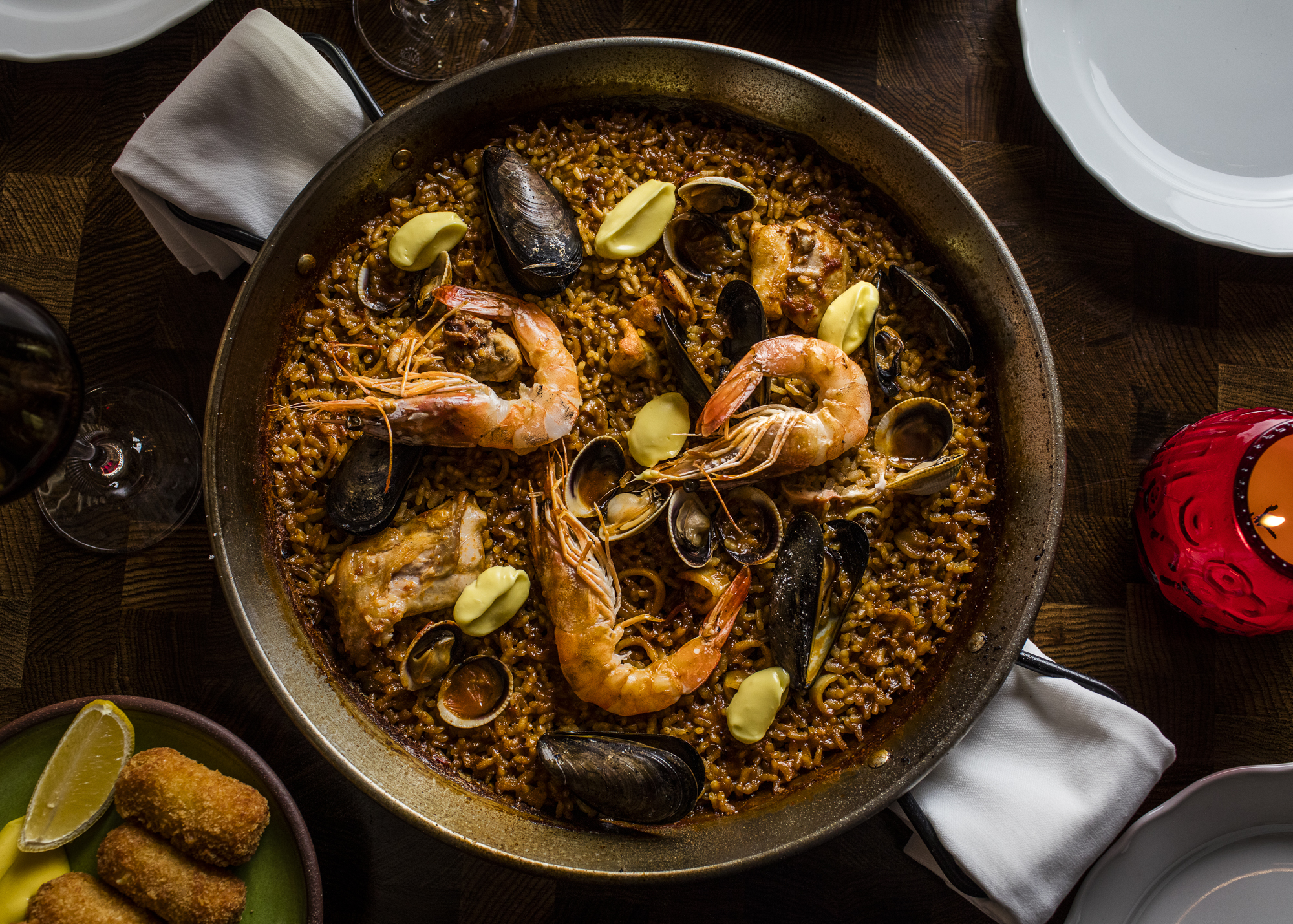
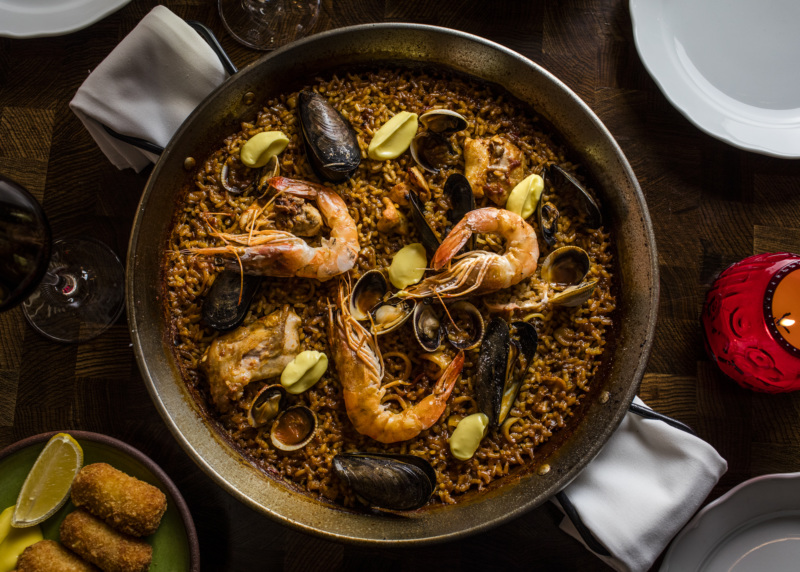
***
As for what old patrons of the reimagined restaurant should expect from the new owners, “equal parts old and new” about sums it up. Enough of the décor has been preserved that an El Quijote fan would recognize it immediately. The vast red-and-white mural on the west wall depicting the adventures of Don Quixote remains, as do the frosted glass, the long dramatic awning, and red, cursive neon sign out in front. Also standing their ground are some of the many Don Quixote-related statues and tchotchkes that were gifted to the restaurant by patrons over the years.
The new proprietors, while adding new features like light fixtures above the bar and fanciful coat hooks below the bar, also peeled back some of the space’s layers to reveal an even richer level of history. The black-and-white linoleum floor that had come to define the space was ripped up to reveal the beautiful, original tile floor from the 1930s. And the dropped ceiling was removed, adding some additional head room and leaving a charmingly distressed roof.
The cut-back dining space places more emphasis on the bar, too. And, indeed, the bar was the team’s original focal point. “The idea was to make it more bar-focused and less restaurant-focused, but as we’ve developed the menu, it’s really taken on more of a restaurant life,” says Young.
The menu has been updated, while still respecting the fare of El Quijote’s past. The two most popular dishes in the past were the paella and the lobster. (The old place’s “daily double” special got you two one-and-a-quarter-pound lobsters for $33!) In their place, chef de cuisine Byron Hogan has put forth the Paella de Temporada, made of bomba rice, squid, cockles, mussels, blue prawns, and rabbit; and there’s the Bogavante Quijote, a lobster prepared a la plancha with pimenton butter and amontillado sherry.
Hogan, who spent a dozen years in Spain — has drawn inspiration from the cooking traditions of the Basque and Catalonia regions for the El Quijote menu. “We’re trying to cook a touch modern on a traditional foundation,” says Young. “I think, for some folks, there’s a nostalgia for the old menu, so it takes a while for them to settle in.”
The Chipirones en Su Tinta Con Morcilla is a squid stuffed with its tentacles and blood sausage and braised in a sauce made with its own ink, amontillado sherry, onions, green peppers, and tomatoes. Once plated, it’s finished with lemon zest and lemon juice. The Butifarra Casera de Trufa Negra con Salsa Vizcaina is a rustic country dish made of housemade truffled garlic sausage, baby butter beans, and a tomato pepper sauce. Side dishes include the Spanish staple patatas bravas, which is served with aioli and a tomato and choricero pepper sauce.
Bar director Brian Evans, in putting together the cocktail menu, took a page from Boadas, the renowned Barcelona cocktail bar, and introduced a couple of cocktails to the menu that are not stirred nor shaken, but “thrown” — that is, tossed from one vessel to the next until thoroughly mixed and chilled. There are also elevated versions of Spanish classics like the Gin Tonic (El Quijote’s will change seasonally) and the Kalimotxo. The latter is typically made with just red wine and cola, but here it’s a drink more inspired by the Cuba Libre, featuring pineapple-infused rum, spiced garnacha wine, and a sparkling non-alcoholic amaro. Some sherry-based cocktails and a couple of frozen drinks round out the menu. And, of course, sangria.
“We had to have a reliably excellent sangria,” says Evans. There is a red, a white, and a non-alcoholic sangria, all available by the pitcher. None is a simple affair. The white, for instance, includes albariño, verjus, vanilla bean, pisco, apple brandy, peach liqueur, cucumber bitters, and sparkling lemonade. The restaurant, only open now for a few weeks, already is going through 20 quarts of white sangria a week, and 40 quarts of the red. Look also for a selection of Spanish beers and a wine list curated by sommelier Claire Paparazzo.
The team is well aware of the legacy that has been placed in their hands and has approached it with care and deference. Speaking of Sunday Hospitality’s revival of El Quijote, Charles Seich, partner/Hotel Chelsea for Sunday Hospitality says, “In many ways, this is the easiest of the hotel projects, because it’s the smallest and a lot of the elements are here. But it’s also the hardest, because we really have to respect what was here, since this existed before. People are going to have a lot of opinions on this.
“There are a lot of celebrations that happened here,” he adds. “We’re hoping to continue in that tradition.”
El Quijote is open nightly from 5 to 11 p.m.
Robert Simonson writes about cocktails, spirits and bars for The New York Times. He is the author of four books on cocktails, most recently “Mezcal and Tequila Cocktails” and “The Martini Cocktail,” which won a Spirited Award in 2020 and was nominated for awards from the James Beard Foundation and the International Association of Culinary Professionals (IACP). Follow him on Instagram. Follow Resy, too.


